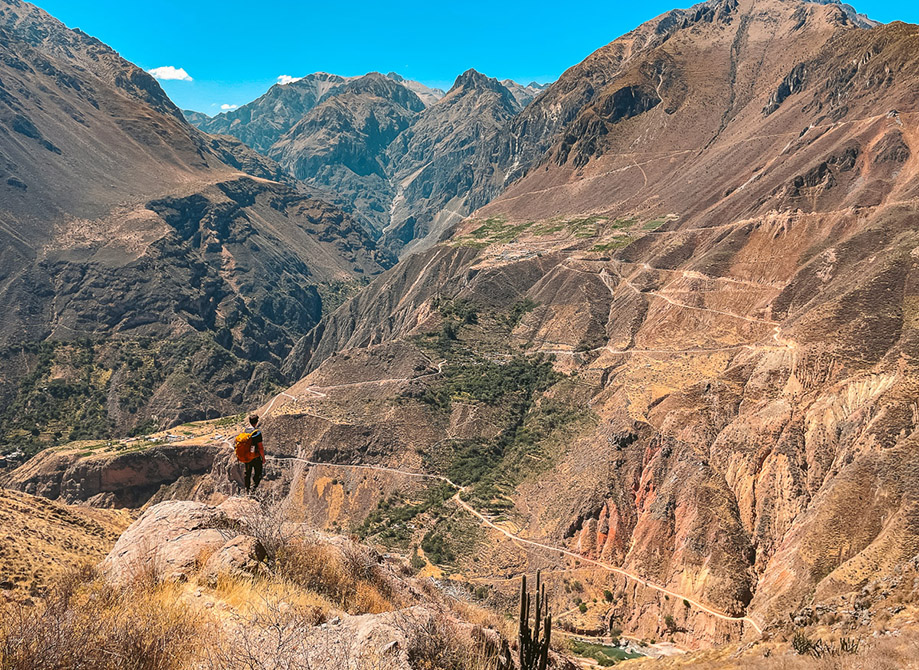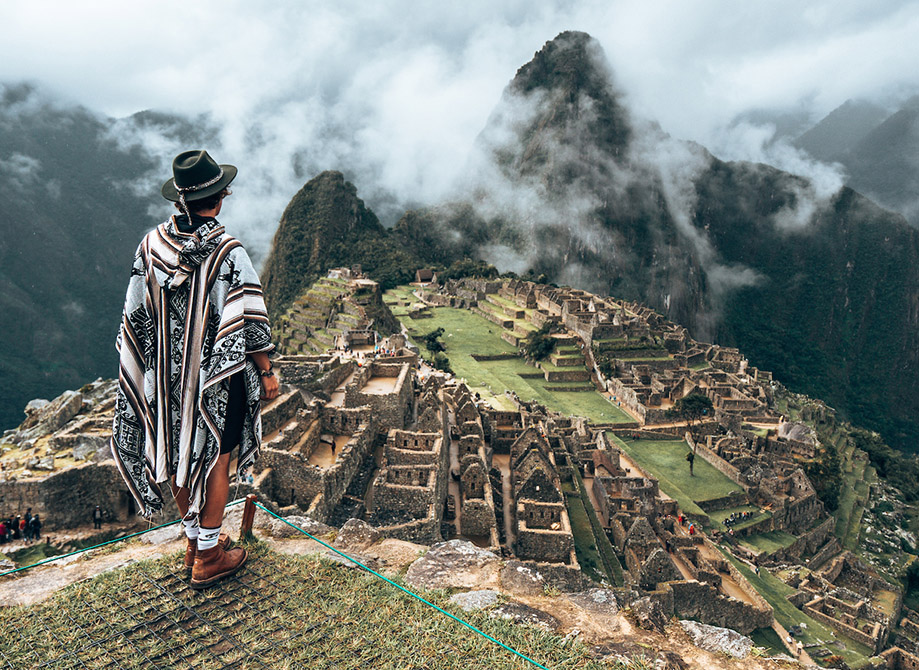Peru had always held a special allure for me. From the towering peaks of the Andes to the mysterious ruins of Machu Picchu, this South American gem promised a tapestry of experiences waiting to be unraveled. Join me as I delve into Peru’s springtime wonders, discovering its top attractions and unearthing hidden treasures along the way.
Machu Picchu: The Crown Jewel of the Andes
Location
Nestled high in the Andes Mountains, Machu Picchu stands as a testament to the ingenuity of the ancient Inca civilization. To reach this iconic site, I embarked on a scenic train journey from Cusco, winding through lush valleys and towering peaks before arriving at the gateway to this archaeological marvel.
Experience
As I set foot in Machu Picchu, I felt like I was entering a realm suspended in time—a place where the ancient past seamlessly melded with the present. The misty mountains looming overhead added to the aura of mystery and majesty that enveloped the site, setting the stage for an unforgettable adventure.
Mystical Atmosphere
The moment I caught my first glimpse of Machu Picchu, I was immediately struck by its ethereal beauty. The intricate stone terraces, painstakingly built by the Incas centuries ago, seemed to defy gravity as they cascaded down the mountainside. The imposing temples and ceremonial plazas stood as silent witnesses to the achievements of those who had once called this enigmatic citadel home.
Awe-Inspiring Views
As I began to explore the site, I was treated to breathtaking panoramas that stretched as far as the eye could see. From the verdant valleys below to the snow-capped peaks of the Andes in the distance, every vista seemed to offer a glimpse into the awe-inspiring natural beauty of Peru. I found myself pausing at every turn to soak in the splendor of my surroundings, feeling humbled by the sheer magnitude of it all.
Journey Through Time
Wandering along the winding pathways and exploring the hidden nooks and crannies of Machu Picchu, I couldn’t help but feel like I had been transported back in time. The ancient stone buildings, meticulously crafted by Inca artisans, seemed to whisper tales of a bygone era—a time when this remote citadel was a thriving hub of civilization. I marveled at the ingenuity of the Incas, who had managed to construct such a monumental feat of engineering in the heart of the Andean wilderness.
Sense of Wonder
As I stood atop the terraces overlooking the sacred valley below, a sense of wonder washed over me. Here, in this remote corner of the world, I felt a connection to something greater than myself—a reverence for the natural and cultural heritage that Machu Picchu represents. It was a surreal experience, one that filled me with a profound sense of gratitude for the opportunity to witness such a marvel of human history.
Tips and Recommendations
For the best experience, I recommend booking tickets in advance, especially during the peak springtime season when Machu Picchu sees a surge in visitors. Opt for an early morning entry to catch the sunrise over the mist-shrouded peaks, casting a golden hue over the ancient ruins. Additionally, consider hiring a knowledgeable guide to provide insight into Machu Picchu’s history and significance, adding depth to your visit.
The Sacred Valley: A Tapestry of Inca Ruins and Andean Culture

Location
Stretching along the Urubamba River, the Sacred Valley is a treasure trove of ancient ruins, traditional villages, and breathtaking landscapes. To immerse myself in the region’s rich tapestry of history and culture, I embarked on a scenic drive from Cusco, winding through terraced hillsides and fertile valleys dotted with Inca fortresses and agricultural terraces.
Experience
Exploring the Sacred Valley was like stepping into a living museum, where the echoes of the past resonated through the rugged landscapes and ancient ruins. Every stop along the way revealed a new layer of Peru’s rich cultural heritage and the enduring legacy of the Inca civilization.
Ollantaytambo: The Fortress of the Incas
Our journey began at the imposing fortress of Ollantaytambo, a testament to the engineering prowess of the Inca civilization. Perched high above the valley floor, the massive stone terraces and intricately carved walls stood as a silent tribute to the ingenuity of those who built them centuries ago. As I climbed the steep stairways and explored the labyrinthine corridors, I couldn’t help but feel a sense of awe at the sheer scale and complexity of the site.
Pisac: A Vibrant Tapestry of Culture
Our next stop was the vibrant market town of Pisac, where the sights, sounds, and smells of Andean culture enveloped us from the moment we arrived. The bustling market was a kaleidoscope of color, with vendors selling everything from handwoven textiles to intricately crafted pottery. I sampled local delicacies like empanadas and ceviche, savoring the flavors of Peru while chatting with indigenous artisans about their craft.
Chinchero: Preserving Tradition
Our final destination was the quaint village of Chinchero, where tradition and heritage were alive and well. Here, we had the opportunity to witness traditional weaving demonstrations and learn about the ancient techniques passed down through generations. Watching skilled artisans transform raw alpaca wool into intricate textiles was a truly mesmerizing experience, highlighting the importance of preserving Andean culture in a rapidly changing world.
A Deeper Connection
As we made our way through the Sacred Valley, each stop left an indelible mark on my soul, deepening my connection to Peru’s rich tapestry of culture and history. Sampling local delicacies, exploring ancient ruins, and interacting with indigenous artisans added a layer of authenticity to my experience, leaving me with a profound appreciation for the Andean way of life.
Tips and Recommendations
To make the most of your visit to the Sacred Valley, I recommend setting aside at least a few days to explore the region’s myriad attractions. Consider staying in one of the charming guesthouses or eco-lodges that dot the valley, offering stunning views and authentic Andean hospitality. Don’t miss the opportunity to visit Chinchero, known for its traditional textile weaving techniques, and Maras, home to the spectacular salt terraces that have been harvested since Inca times.

Colca Canyon: A Glimpse into Nature’s Grandeur
Location
Located in southern Peru, Colca Canyon is one of the deepest canyons in the world, with dramatic cliffs, lush oases, and traditional villages nestled along its rugged terrain. To reach this natural wonder, I embarked on a scenic drive from Arequipa, winding through the Andean highlands and past picturesque villages before descending into the depths of the canyon.
Experience
Standing on the rim of Colca Canyon, I was overcome with a sense of wonder and reverence as I beheld one of nature’s most magnificent creations. The sheer magnitude and breathtaking beauty of the canyon stretched out before me, with its rugged cliffs plunging into the depths below and the Colca River carving a winding path through the rocky landscape.
Awe-Inspiring Beauty
As I gazed out at the vast expanse of Colca Canyon, I couldn’t help but feel humbled by the grandeur of the natural world. The towering cliffs seemed to stretch endlessly into the sky, their jagged edges casting dramatic shadows over the canyon floor. Above me, condors soared gracefully on the thermals, their majestic wings outstretched as they rode the currents high above the canyon walls.
Breathtaking Vistas
Hiking along the canyon trails, I was treated to breathtaking vistas at every turn. The rugged terrain gave way to sweeping panoramas of the surrounding landscape, with cascading waterfalls tumbling down sheer cliffs and terraced fields stretching out into the distance. Each step revealed a new wonder, a new marvel of nature to behold and appreciate.
Cultural Heritage
As I made my way deeper into the canyon, I encountered evidence of the rich cultural heritage that thrives in this remote corner of Peru. Terraced fields, painstakingly cultivated by indigenous communities for generations, clung to the steep slopes of the canyon, a testament to their ingenuity and resilience. Along the trail, I passed by small villages where locals went about their daily lives, their traditions and customs deeply intertwined with the land they called home.
Tranquility Amidst Nature’s Grandeur
After a day of exploration, I sought refuge in the natural hot springs that dot the canyon, a welcome respite from the rigors of hiking. Nestled amidst the rugged landscape, these thermal pools offered a moment of tranquility amidst nature’s grandeur. As I soaked in the warm, soothing waters, I couldn’t help but feel a profound sense of peace wash over me, a reminder of the healing power of the natural world.
Tips and Recommendations
To fully experience Colca Canyon, I recommend spending at least a couple of days exploring the region, allowing time for hiking, birdwatching, and cultural encounters with the local communities. Consider staying in one of the rustic lodges or guesthouses that line the canyon rim, offering stunning views and the opportunity to connect with nature. Don’t forget to wake up early to witness the majestic flight of the Andean condors, a sight that is sure to leave a lasting impression.
A Tapestry of Experiences
As I reflect on my journey through Peru’s springtime wonders, I am filled with gratitude for the opportunity to explore this remarkable country and uncover its hidden treasures. This trip reminded me of my journey to Newport. From the ancient citadel of Machu Picchu to the rugged landscapes of Colca Canyon, each destination offered a unique and unforgettable experience that left an indelible mark on my soul.
Whether you’re drawn to the mysteries of ancient civilizations, the beauty of pristine natural landscapes, or the warmth of Andean culture, Peru offers something for every traveler. So why not embark on your own springtime adventure and discover the wonders that await you in this captivating land?
